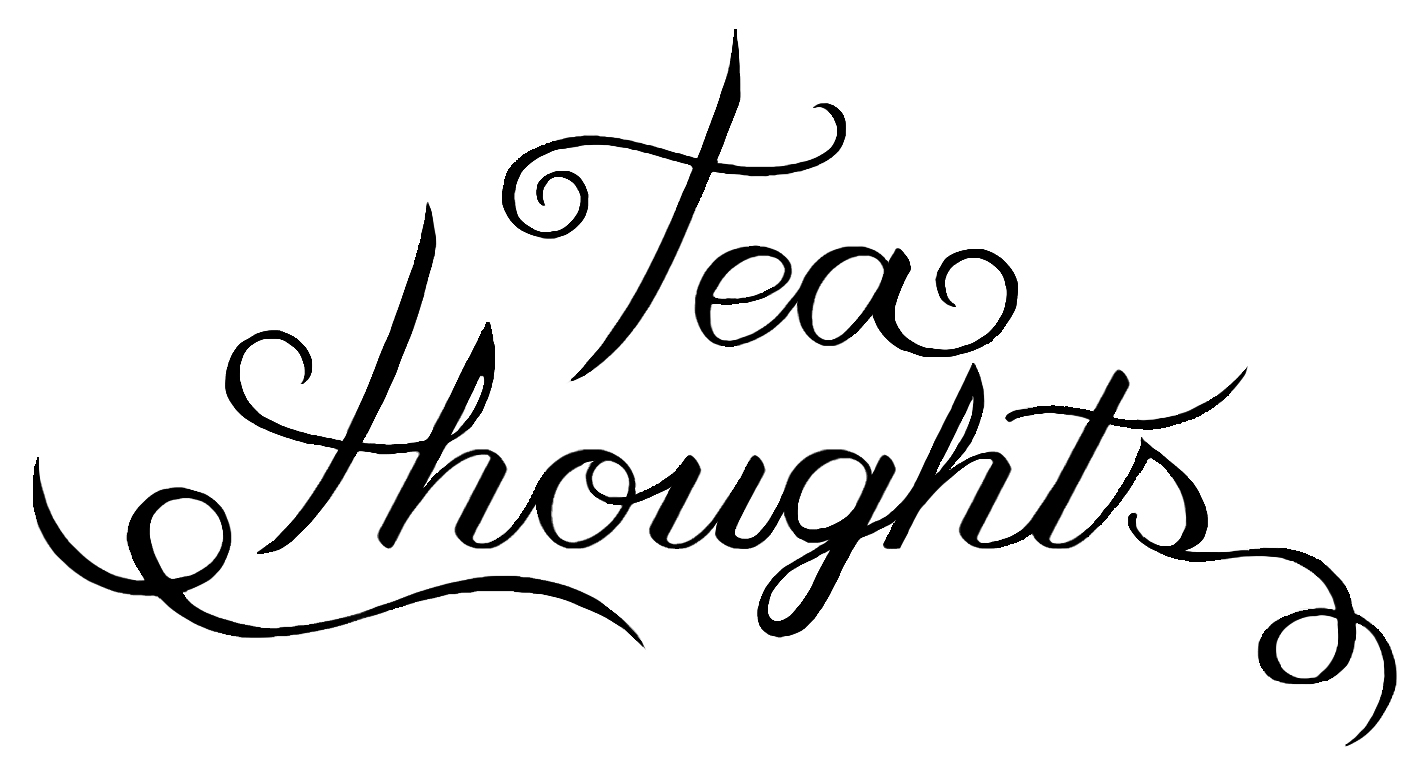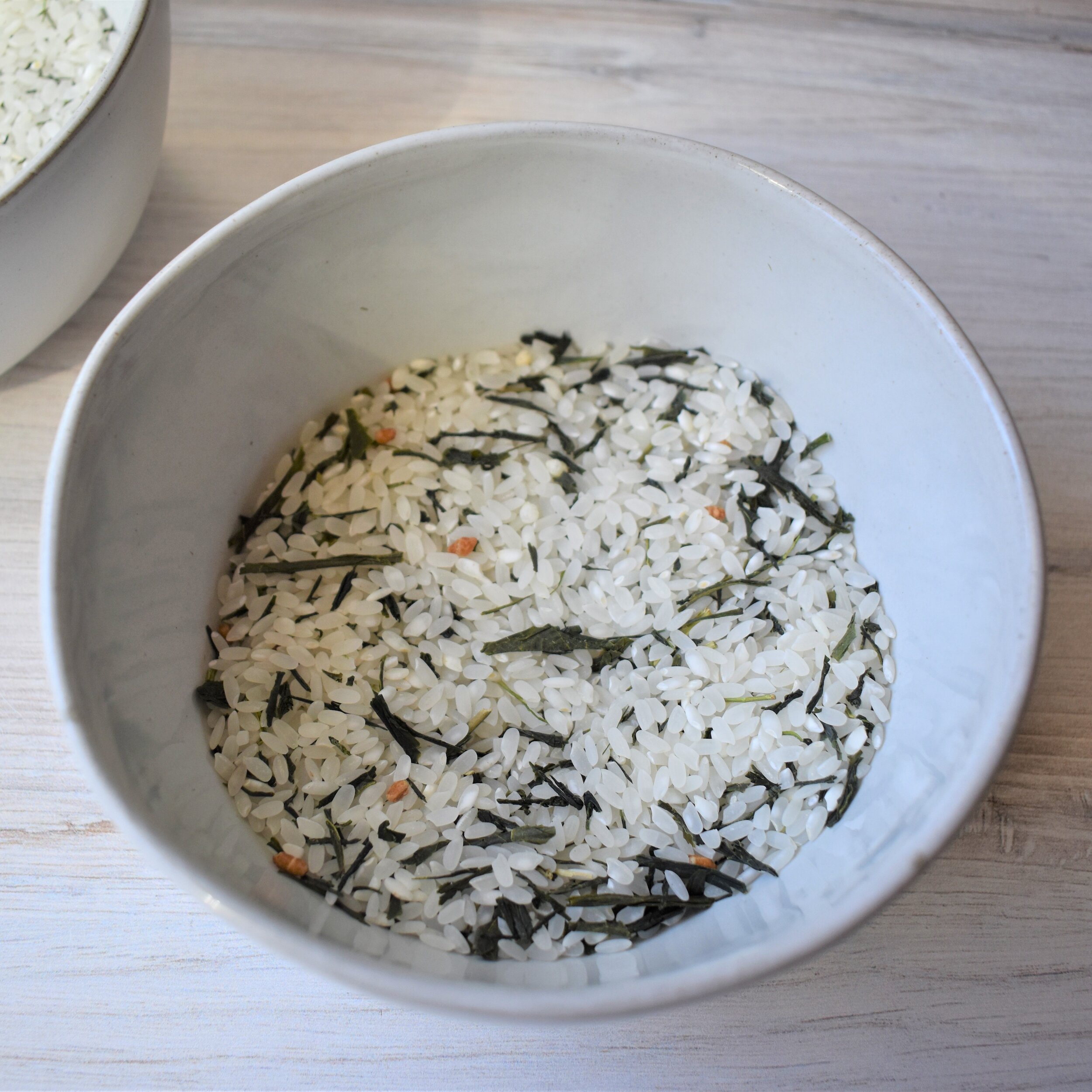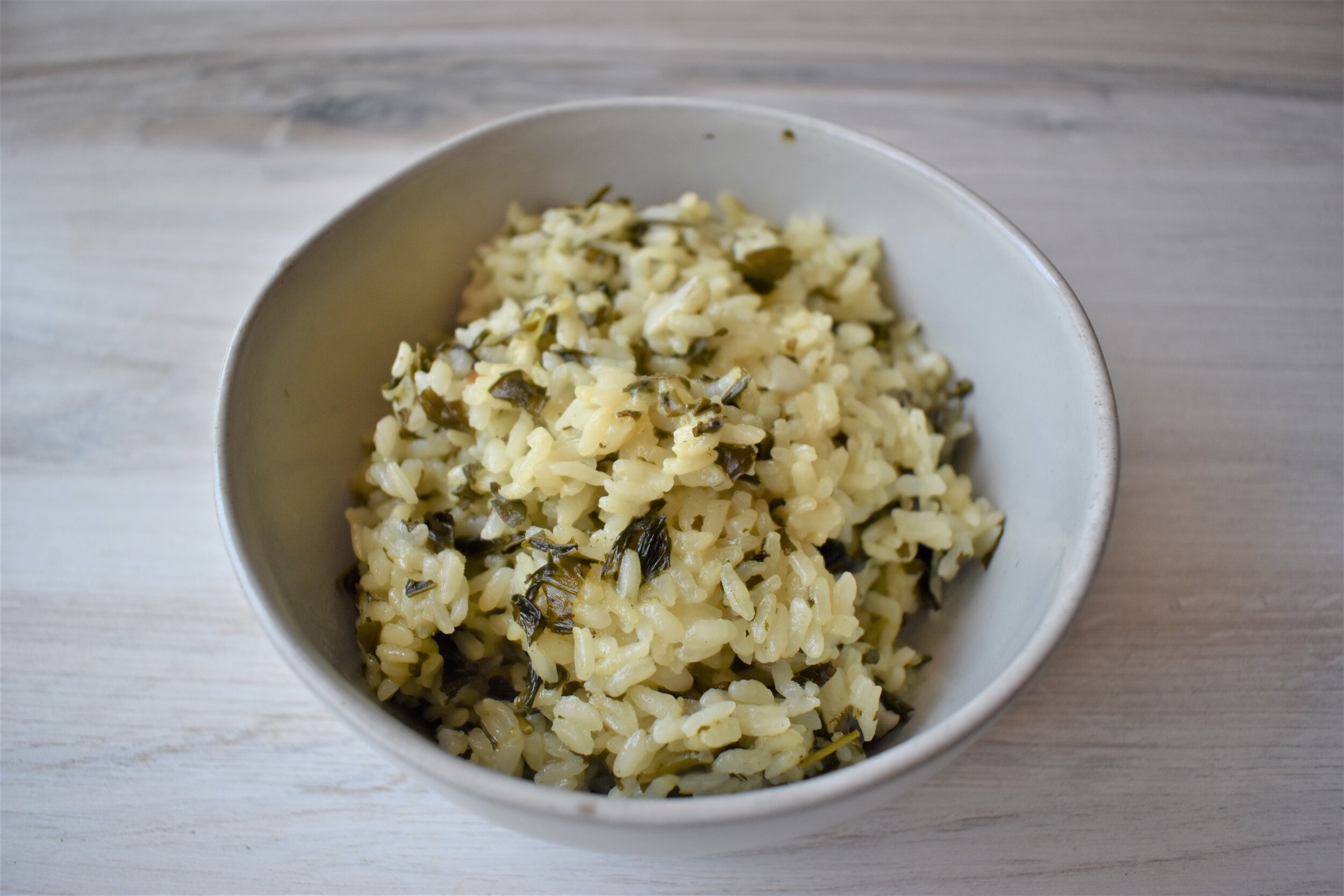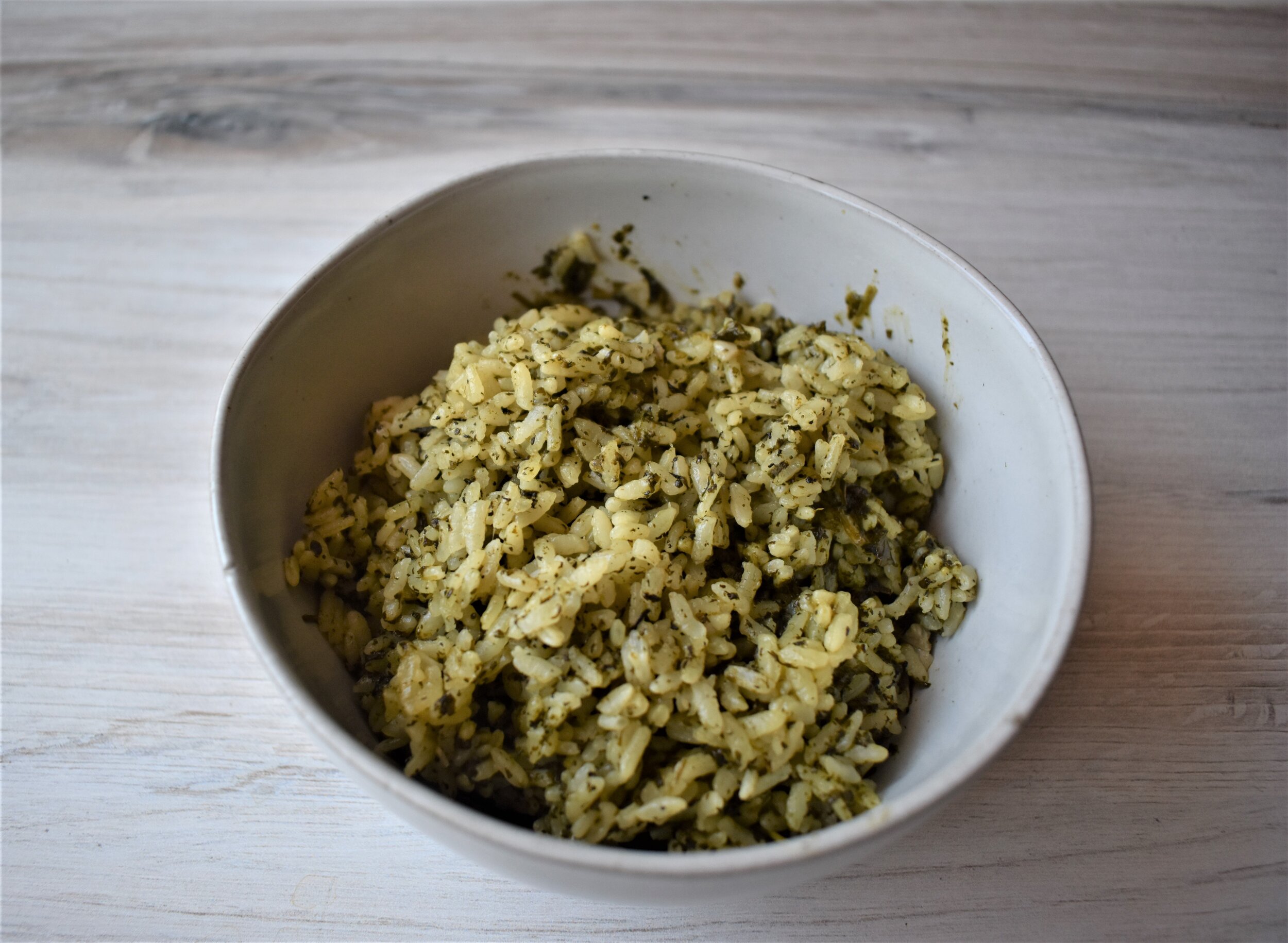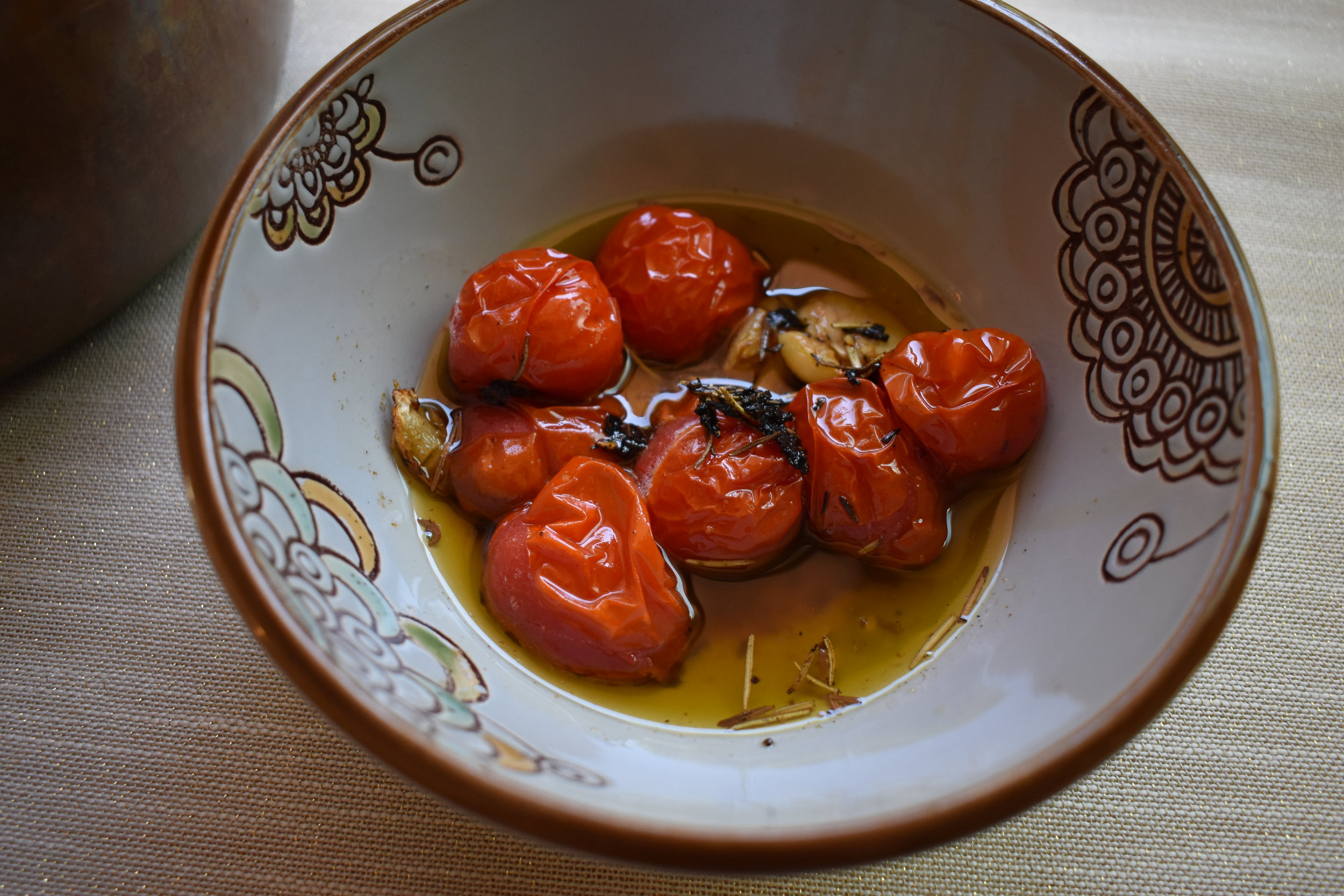Genmaicha Rice Vs. Sencha Rice
If you aren’t following Tea Curious on instagram, you need to! She encourages experimenting with your tea instead of just accepting what people say about tea. She often tests ways of brewing, tasting etc! She recently had a challenge to drink down your green tea collection and guess what, I really needed to participate.
I started out with having some of my old, but surprisingly still good matcha every morning until that was finished and then I turned to my cabinet where I have a few green teas. I’ll be honest, while I don’t dislike green teas they aren’t what I reach for first so they often fall by the wayside. I actually really enjoy cold brewing green tea and drinking it out of a fancy glass with my dinner :)
Since today was the last day, I decided to help drink down my stash by experimenting with cooking! I was set on cooking rice in tea because I love doing that :) I’ve done it a few times and you can find those recipes here:
In this post, I will talk more about the teas as opposed to the cooking method, so if you’re interested in that make sure to check out the linked posts.
Let’s meet the teas: Genmaicha and Sencha.
Both of these teas are actually fairly fresh. The genmaicha is from ippodo tea that I was given to photograph for one of my birthday giveaways! The sencha is a gift that my cousin brought me from his recent trip to Japan. I’m almost 100% certain it is sencha after asking some friends who know Japanese and also comparing it to my other green teas.
Now, I broke several rules of here for the sake of the experiment. I’ve cooked with tea many times and there is a balance between bitterness and all the flavor cooking off. I decided to cold brew the tea with 3 tablespoons of tea to make sure I got a potent brew since I would be using the brew as the water for the rice. I know this sounds like a lot but I need it to be potent so that it isn’t all cooked off which can happen.
So, at first glance the Sencha (on the right) is way darker in color and looks like it will give more of that flavor into the rice. This is the first interesting part of the experiment because this also speaks to when brewing this tea. Both of these brews had the same amount of tea and water and cold crewed for about 10 hours. I didn’t open the leaves up with warm water first, I just filled with vessels with cold water. I cooked each 1/2 cup of rice with one cup of the brewed tea.
At this point, I also kind of knew which rice I would like better. But, let’s continue!
When I cooked the rice, I also put a little less than a tablespoon of the leaves into the dry rice. It may seem like overkill, but I wanted to see which tea would hold up best to the environment.
After cooking, there was a large difference in how green the two rices turned out. You may be able to guess based on the darkness of the brews above.
Since I used tea in the rice as well, the sencha was a little bit more potent in terms of turning the rice color.
So after taking a few bites of each, here is what I thought. Genmaicha was the winner! If we talk about the flavor of green tea, the sencha rice is definitely more overpowering but it is present for the genmaicha but in a more pleasing way.
The sencha was strong but also a bit bitter. I would still totally eat this whole bowl and pairing it with either an egg or veggies and meat will be delicious. But on it’s own, it was just a bit too bitter and it seemed like the leaves kind of fell flat in the cooking process. The one thing that this rice did hold over the genmaicha is that the leaves incorporated better into the rice and it was a bit easier to eat.
The genmaicha rice was my favorite for a few reasons. First, I thing the brew was an nice, even flavor that really shows up in the rice. I think the genmaicha is much better quality tea than the sencha. The genmaicha flavor shows up in the rice but it is also mellow enough to let you enjoy the flavor of the rice as well. I think this would pair well with something a bit heavier. The one downside to the genmaicha was that the larger leaves and rice made it a bit more difficult to eat incorporated as there were some chewier aspects to it.
Tamago Kake Gohan with Gyokuro Spent Leaves
Have you ever tried Gyokuro? It’s one of my favorite green teas to drink…and to cook with! I often feel bad getting rid of tea leaves after I brew them especially because I drink so much of it! I’ve used spent leaves in plenty of recipes but in my opinion, green tea is often the best for cooking. I’ve used gyokuro before sin a shrimp stir fry recipe here.
I was brewing this gyokuro to try before posting a giveaway with Sencha.app. You can find this gyokuro here.
I was trying to decide what to do with the gyokuro. I prefer to create simple dishes here on my blog because I want these recipes to be easy to create with accessible ingredients!
I was reminded about a chef’s table episode where the chef was talking about his time studying food and working in restaurants in Japan. He was taught about a classic Japanese comfort food called tamago kake gohan which translates to egg over rice!
The chef took hot rice and topped it with a beaten raw egg! He also added soy sauce and some seaweed type seasoning. It may have had some sesame seeds as well but I can’t remember. He mixed it together and ate it! This embodies the umami flavor. Umami meaning savory.
At first look, you think that eating a raw egg isn’t safe! After looking it up, it seems like if the egg is pasteurized it is ok. Consider also that if you are putting a raw egg on hot rice, it’s going to cook.
Unfortunately, after looking at all the eggs in my fridge, I noticed that none of them were pasteurized so I opted to do a poached egg so that I could feel a bit safer with my unpasteurized eggs but still get that delicious egg and rice flavor.
I also decided how to use the gyokuro. Instead of just the egg, rice and seaweed I wanted to be a little extra. I stirfried some garlic, salt, pepper, sambal olek and the gyokuro leaves! Once this became fragrant I set this aside with my other ingredients, the poached egg and soy sauce.
Confession: I had never poached an egg before so I found a video to help. It’s actually super easy. I found this video short and straight to the point.
The other modification I made was to use rice I had on hand and cooked which was a delicious red rice. If I were to do this again however I would definitely use a sushi or jasmine rice just for better texture.
Once you have all your ingredients prepped, add them all to the rice and mix with chopsticks vigorously until combined! Use soysauce to taste.
Here you get a hearty and comforting snack AND you don’t waste spent leaves :) The gyokuro gives this dish a nice bold flavor.
Would you try this??
Gyokuro Rice with roasted herbs and tomatoes
My brother brought me some gyokuro from his trip to Japan. Gyokuro is one of my favorite green teas and I have had good luck cooking with it in the past! You can find a previous shrimp recipe here.
This time I decided to take my love of rice on another test ride and cook it in gyokuro! I didn’t want to just use gyokuro so I decided to use a few other flavors with it as well. I wanted something savory and herbed.
Starting small, I used one cup of rice and only a few tomatoes but after trying this recipe I think I would like to have even more of the roasted ingredients in the rice and would definitely add more or even double the amount! I have timing for the roasted vegetables in the recipe but really you just want to make sure that they start to break down and give it a few mixes so that they soak up the oil and herbs.
After you take the tomatoes and herbs out, place them in a bowl so that they can soak in the olive oil and herbs.
When making rice, olive oil at the start is important to make it tender and flavorful. Instead of adding olive oil plain, the tomatoes + herbs + olive oil are mixed into the rice + gyokuro mixture before cooking. In addition to mixing, I also smashed up some the tomatoes further before putting this on the stove.
When adding in the roasted ingredients, I would also suggest a taste test to manage the salt and pepper level. I didn’t add anything additional at this point because I added it to the roasting pan but I wish I had!
The result is a richer and more flavorful rice. I’ve combined a few favorites of mine here. First of all, rice. But the reason I added the roasted ingredients is because it is similar to many Persian rice dishes where the meal is in the rice. You have plenty of ingredients blended up in the rice and in this case it was herbs and tomatoes!
Garlic Jasmine Oolong Rice
Tea Rice.
I've probably mentioned on my blog or instagram before that I LOVE rice. It's pretty difficult not to when you grow up in a Persian household. Like tea, rice is very central to our culture. Rice is an essential ingredient in most dishes and I've always thought it was something that held together our stews.
That being said, my favorite rice is definitely basmati. Basmati rice is what I grew up eating and it's my favorite to cook as well. A while ago, I got a Blue Apron meal where there was a garlic jasmine rice recipe. I don't often use jasmine rice but it was a simple and delicious recipe that I have recreated almost every time I marinate meat with Japanese inspired spices. Most times when I cook I think to myself, how can I incorporate tea into this dish? ENTER Alishan Oolong from Terroir Tea Merchant!
I hear so many people talk about how cooking is so difficult and that's why they don't do it. I totally disagree, YOU ARE MISSING OUT! Unlike baking, cooking gives you a lot more room for experimentation and that is the best part. I like to share simple recipes so that anyone can try them at home. This recipe doesn't get much easier!
Essentially, you are replacing the water used in the recipe to cook the rice with brewed tea. The tea cooks the rice and also infuses it with the oolong flavor.
Again thanks to Sipsby I got to create a unique dish! The Alishan Oolong is described as buttery, floral and nutty. These flavors cut the garlic the perfect amount and give the rice a little more depth than when it's cooked with plain water.
Pair this rice with your fvaorite dish! I suggest someting either slightly sweet or slightly spicy :)
